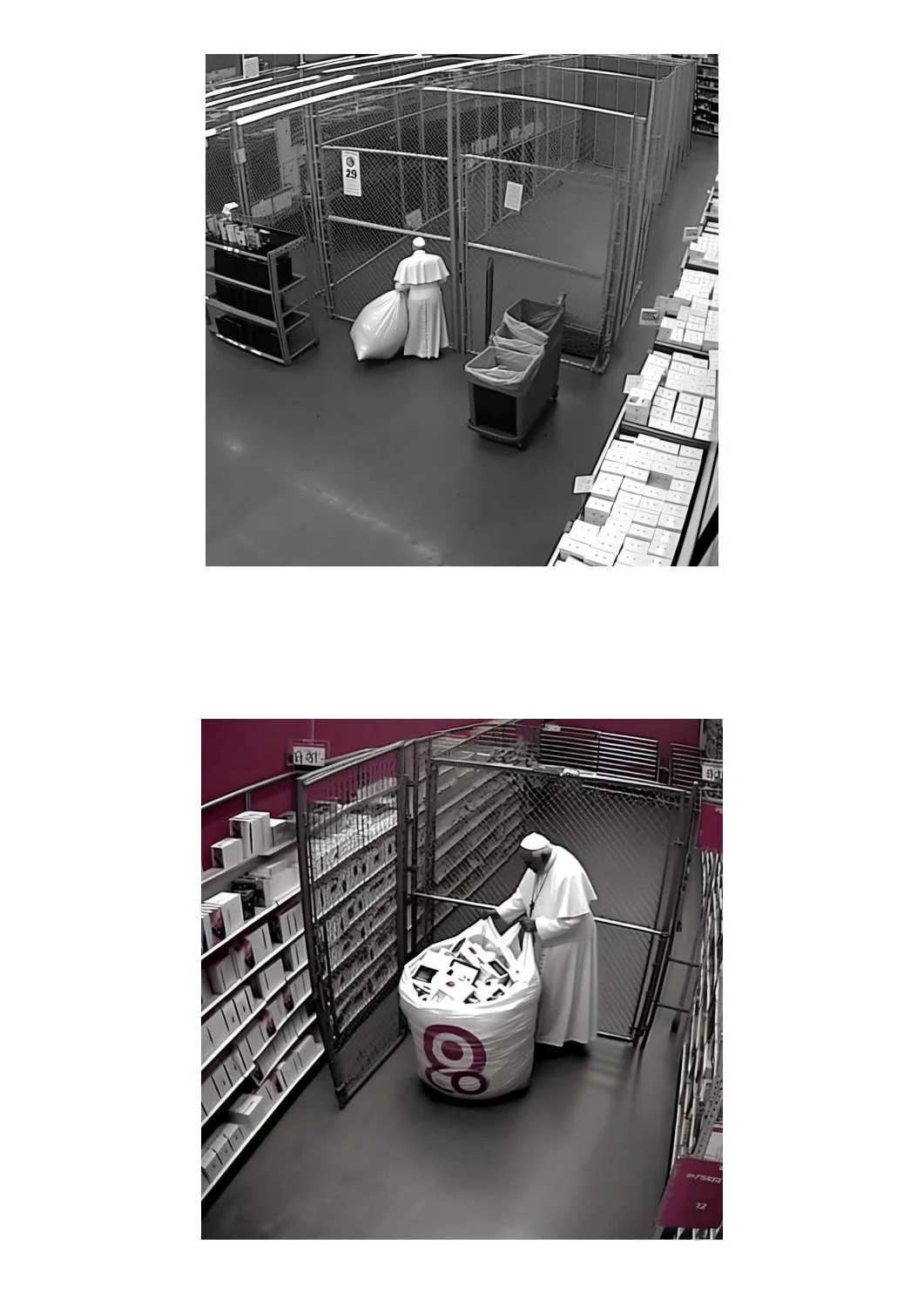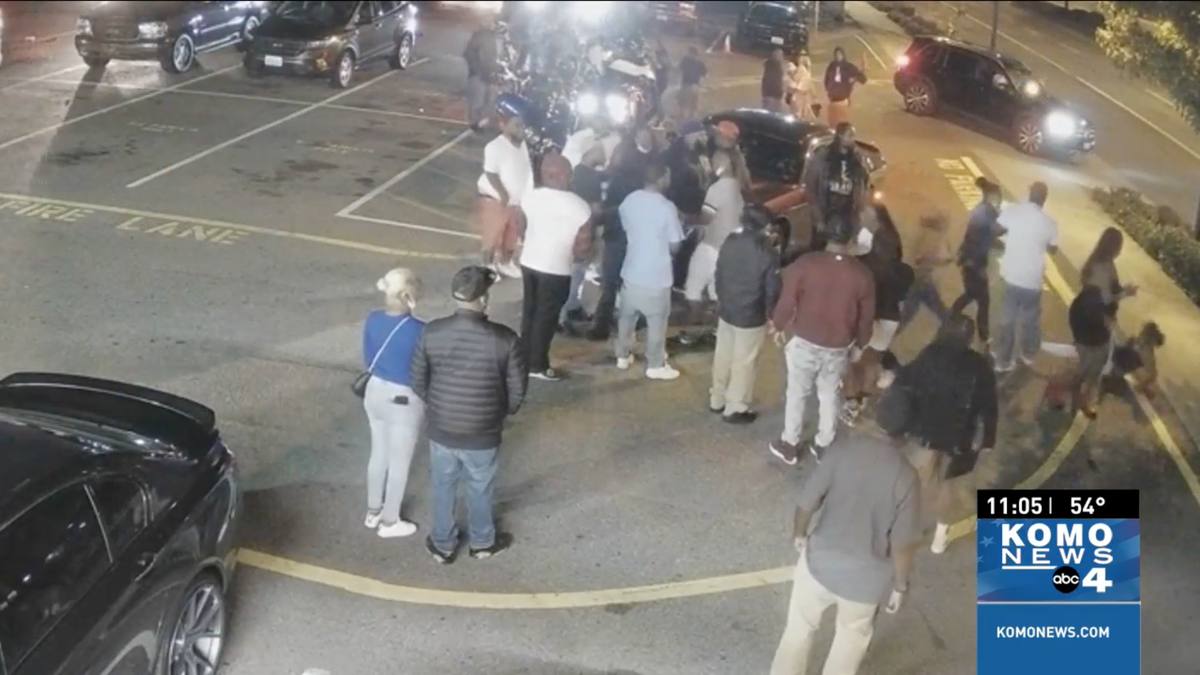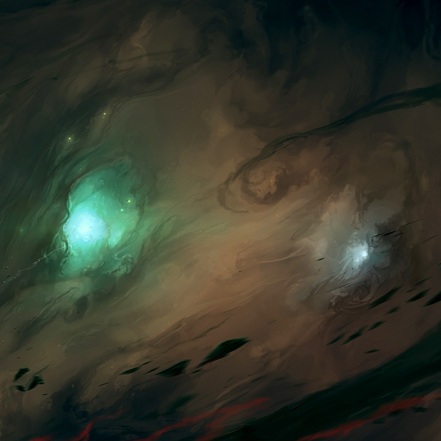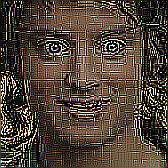- cross-posted to:
- [email protected]
- cross-posted to:
- [email protected]
A judge in Washington state has blocked video evidence that’s been “AI-enhanced” from being submitted in a triple murder trial. And that’s a good thing, given the fact that too many people seem to think applying an AI filter can give them access to secret visual data.

I’d love to see the “training data” for this model, but I can already predict it will be 99.999% footage of minorities labelled ‘criminal’.
And cops going “Aha! Even AI thinks minorities are committing all the crime”!
Tell me you didn’t read the article without telling me you didn’t read the article
deleted by creator
How does this work when you have a shitty Samsung that turns a pic of a pic of the moon into the Moon by adding details that weren’t there?
Imagine a prosecution or law enforcement bureau that has trained an AI from scratch on specific stimuli to enhance and clarify grainy images. Even if they all were totally on the up-and-up (they aren’t, ACAB), training a generative AI or similar on pictures of guns, drugs, masks, etc for years will lead to internal bias. And since AI makers pretend you can’t decipher the logic (I’ve literally seen compositional/generative AI that shows its work), they’ll never realize what it’s actually doing.
So then you get innocent CCTV footage this AI “clarifies” and pattern-matches every dark blurb into a gun. Black iPhone? Maybe a pistol. Black umbrella folded up at a weird angle? Clearly a rifle. And so on. I’m sure everyone else can think of far more frightening ideas like auto-completing a face based on previously searched ones or just plain-old institutional racism bias.
just plain-old institutional racism bias
Every crime attributed to this one black guy in our training data.
Sure, no algorithm is able to extract any more information from a single photo. But how about combining detail caught in multiple frames of video? Some phones already do this kind of thing, getting multiple samples for highly zoomed photos thanks to camera shake.
Still, the problem remains that the results from a cherry-picked algorithm or outright hand-crafted pics may be presented.
Depends on implementation, if done properly and if they don’t try to upscale and deblur too much then that kind of interpolation between multiple frames can be useful to extract more detail. If it’s a moving subject then this type of zoom can create false results because the algorithm can’t tell the difference and will think it’s an optical artifact. For stationary subjects and photographers it can be useful
“When we enhance the image and place a knife in the defendant’s hand…”


According to the evidence, the defendant clearly committed the crime with all 17 of his fingers. His lack of remorse is obvious by the fact that he’s clearly smiling wider than his own face.
Jesus Christ, does this even need to be pointed out!??
There’s people who still believe in astrology. So, yes.
Good god, there are still people who believe in phrenology!
And people who believe the Earth is flat, and that Bigfoot and the Loch Ness Monster exist, and there are reptillians replacing the British royal family…
People are very good at deluding themselves into all kinds of bullshit. In fact, I posit that they’re better even at it than learning the facts or comprehending empirical reality.
Yes. When people were in full conspiracy mode on Twitter over Kate Middleton, someone took that grainy pic of her in a car and used AI to “enhance it,” to declare it wasn’t her because her mole was gone. It got so much traction people thought the ai fixed up pic WAS her.
Don’t forget people thinking that scanlines in a news broadcast over Obama’s suit meant that Obama was a HOLOGRAM and ACTUALLY A LIZARD PERSON.
Its not actually worse than eyewitness testimony.
This is not an endorsement if AI, just pointing out that truth has no place in a courtroom, and refusing to lie will get you locked in a cafe.
Too good, not fixing it.
I met a student at university last week at lunch who told me he is stressed out about some homework assignment. He told me that he needs to write a report with a minimum number of words so he pasted the text into chatGPT and asked it about the number of words in the text.
I told him that every common text editor has a word count built in and that chatGPT is probably not good at counting words (even though it pretends to be good at it)
Turns out that his report was already waaaaay above the minimum word count and even needed to be shortened.
So much about the understanding of AI in the general population.
I’m studying at a technical university.
I’m studying at a technical university.
AI is gonna fuck up an entire generation or more.
Unfortunately it does need pointing out. Back when I was in college, professors would need to repeatedly tell their students that the real world forensics don’t work like they do on NCIS. I’m not sure as to how much thing may or may not have changed since then, but based on American literacy levels being what they are, I do not suppose things have changed that much.
you might be referring to the CSI Effect
Its certainly similar in that CSI played a role in forming unrealistic expectations in student’s minds. But. Rather than expecting more physical evidence in order to make a prosecution, the students expected magic to happen on computers and lab work (often faster than physically possible).
AI enhancement is not uncovering hidden visual data, but rather it generates that information based on previously existing training data and shoe horns that in. It certainly could be useful, but it is not real evidence.
ENHANCE !
The layman is very stupid. They hear all the fantastical shit AI can do and they start to assume its almighty. Thats how you wind up with those lawyers that tried using chat GPT to write up a legal brief that was full of bullshit and didnt even bother to verify if it was accurate.
They dont understand it, they only know that the results look good.
The layman is very stupid. They hear all the fantastical shit AI can do and they start to assume its almighty. Thats how you wind up with those lawyers that tried using chat GPT to write up a legal brief that was full of bullshit and didnt even bother to verify if it was accurate.
Especially since it gets conflated with pop culture. Someone who hears that an AI app can “enhance” an image might think it works like something out of CSI using technosmarts, rather than just making stuff up out of whole cloth.
Of course, not everyone is technology literate enough to understand how it works.
That should be the default assumption, that something should be explained so that others understand it and can make better, informed, decisions. .
It’s not only that everyone isn’t technologically literate enough to understand the limits of this technology - the AI companies are actively over-inflating their capabilities in order to attract investors. When the most accessible information about the topic is designed to get non-technically proficient investors on board with your company, of course the general public is going to get an overblown idea of what the technology can do.
No computer algorithm can accurately reconstruct data that was never there in the first place.
Ever.
This is an ironclad law, just like the speed of light and the acceleration of gravity. No new technology, no clever tricks, no buzzwords, no software will ever be able to do this.
Ever.
If the data was not there, anything created to fill it in is by its very nature not actually reality. This includes digital zoom, pixel interpolation, movement interpolation, and AI upscaling. It preemptively also includes any other future technology that aims to try the same thing, regardless of what it’s called.
One little correction, digital zoom is not something that belongs on that list. It’s essentially just cropping the image. That said, “enhanced” digital zoom I agree should be on that list.
Suddenly thinking of someone using moon photos from their phone as evidence.
Well that’s a bit close minded.
Perhaps at some point we will conquer quantum mechanics enough to be able to observe particles at every place and time they have ever and will ever exist. Do that with enough particles and you’ve got a de facto time machine, albeit a read-only one.
Complexity relates nonlinearly to the amount of moving parts.
We might be able to spend an ungodly amount of energy to do that for one particle for an hour of its existence.
Being able to build a computer (in a wide sense) that can emulate in short time (less than human life) processes consistent of more energy than was spent on its creation - it’s something else.
So many things we believe to be true today suggest this is not going to happen. The uncertainty principle, and the random nature of nuclear decay chief among them. The former prevents you gaining the kind of information you would need to do this, and the latter means that even if you could, it would not provide the kind of omniscience one might assume.
Limits of quantum observation aside, you also could never physically store the data of the position/momentum/state of every particle in any universe within that universe, because the particles that exist in the universe are the sum total of the materials with which we could ever use to build the data storage. You’ve got yourself a chicken-and-egg scenario where the egg is 93 billion light years wide, there.
It preemptively also includes any other future technology that aims to try the same thing
No it doesn’t. For example you can, with compute power, for distortions introduced by camera lenses/sensors/etc and drastically increase image quality. For example this photo of pluto was taken from 7,800 miles away - click the link for a version of the image that hasn’t been resized/compressed by lemmy:

The unprocessed image would look nothing at all like that. There’s a lot more data in an image than you can see with the naked eye, and algorithms can extract/highlight the data. That’s obviously not what a generative ai algorithm does, those should never be used, but there are other algorithms which are appropriate.
The reality is every modern photo is heavily processed - look at this example by a wedding photographer, even with a professional camera and excellent lighting the raw image on the left (where all the camera processing features are disabled) looks like garbage compared to exactly the same photo with software processing:

None of your examples are creating new legitimate data from the whole cloth. They’re just making details that were already there visible to the naked eye. We’re not talking about taking a giant image that’s got too many pixels to fit on your display device in one go, and just focusing on a specific portion of it. That’s not the same thing as attempting to interpolate missing image data. In that case the data was there to begin with, it just wasn’t visible due to limitations of the display or the viewer’s retinas.
The original grid of pixels is all of the meaningful data that will ever be extracted from any image (or video, for that matter).
Your wedding photographer’s picture actually throws away color data in the interest of contrast and to make it more appealing to the viewer. When you fiddle with the color channels like that and see all those troughs in the histogram that make it look like a comb? Yeah, all those gaps and spikes are actually original color/contrast data that is being lost. There is less data in the touched up image than the original, technically, and if you are perverse and own a high bit depth display device (I do! I am typing this on a machine with a true 32-bit-per-pixel professional graphics workstation monitor.) you actually can state at it and see the entirety of the detail captured in the raw image before the touchups. A viewer might not think it looks great, but how it looks is irrelevant from the standpoint of data capture.
They talked about algorithms used for correcting lens distortions with their first example. That is absolutely a valid use case and extracts new data by making certain assumptions with certain probabilities. Your newly created law of nature is just your own imagination and is not the prevalent understanding in the scientific community. No, quite the opposite, scientific practice runs exactly counter your statements.
No computer algorithm can accurately reconstruct data that was never there in the first place.
What you are showing is (presumably) a modified visualisation of existing data. That is: given a photo which known lighting and lens distortion, we can use math to display the data (lighting, lens distortion, and input registered by the camera) in a plethora of different ways. You can invert all the colours if you like. It’s still the same underlying data. Modifying how strongly certain hues are shown, or correcting for known distortion are just techniques to visualise the data in a clearer way.
“Generative AI” is essentially just non-predictive extrapolation based on some data set, which is a completely different ball game, as you’re essentially making a blind guess at what could be there, based on an existing data set.
making a blind guess at what could be there, based on an existing data set.
Here’s your error. You yourself are contradicting the first part of your sentence with the last. The guess is not “blind” because the prediction is based on an existing data set . Looking at a half occluded circle with a model then reconstructing the other half is not a “blind” guess, it is a highly probable extrapolation that can be very useful, because in most situations, it will be the second half of the circle. With a certain probability, you have created new valuable data for further analysis.
But you are not reporting the underlying probability, just the guess. There is no way, then, to distinguish a bad guess from a good guess. Let’s take your example and place a fully occluded shape. Now the most probable guess could still be a full circle, but with a very low probability of being correct. Yet that guess is reported with the same confidence as your example. When you carry out this exercise for all extrapolations with full transparency of the underlying probabilities, you find yourself right back in the position the original commenter has taken. If the original data does not provide you with confidence in a particular result, the added extrapolations will not either.
And then circles get convictions so even if the model did somehow start off completely unbiassed people are going to start feeding it data that weighs towards finding more circles since a prosecution will be used as a ‘success’ to feed back into the model and ‘improve’ it.
Looking at a half circle and guessing that the “missing part” is a full circle is as much of a blind guess as you can get. You have exactly zero evidence that there is another half circle present. The missing part could be anything, from nothing to any shape that incorporates a half circle. And you would be guessing without any evidence whatsoever as to which of those things it is. That’s blind guessing.
Extrapolating into regions without prior data with a non-predictive model is blind guessing. If it wasn’t, the model would be predictive, which generative AI is not, is not intended to be, and has not been claimed to be.
This is just smarter post processing, like better noise cancelation, error correction, interpolation, etc.
But ML tools extrapolate rather than interpolate which adds things that weren’t there
offtopic: I like the picture on the left more. It feels more alive. Colder in color, but warmer in expression. Dunno how to say that. And I’ve been in a forest yesterday, so my perception is skewed.
Hold up. Digital zoom is, in all the cases I’m currently aware of, just cropping the available data. That’s not reconstruction, it’s just losing data.
Otherwise, yep, I’m with you there.
See this follow up:
https://lemmy.world/comment/9061929
Digital zoom makes the image bigger but without adding any detail (because it can’t). People somehow still think this will allow you to see small details that were not captured in the original image.
Also since companies are adding AI to everything, sometimes when you think you’re just doing a digital zoom you’re actually getting AI upscaling.
There was a court case not long ago where the prosecution wasn’t allowed to pinch-to-zoom evidence photos on an iPad for the jury, because the zoom algorithm creates new information that wasn’t there.
There’s a specific type of digital zoom which captures multiple frames and takes advantage of motion between frames (plus inertial sensor movement data) to interpolate to get higher detail. This is rather limited because you need a lot of sharp successive frames just to get a solid 2-3x resolution with minimal extra noise.
Are you saying CSI lied to me?
Even CSI: Miami?
Horatio would NEVER 😎
Yeeeeeahhh he would. Sneaky one.
If people don’t get the second law of thermodynamics, explaining this to them is useless. EDIT: … too.

No computer algorithm can accurately reconstruct data that was never there in the first place.
Okay, but what if we’ve got a computer program that can just kinda insert red eyes, joints, and plums of chum smoke on all our suspects?
By your argument, nothing is ever real, so let’s all jump on a chasm.
Entropy and information theory is very real, it’s embedded in quantum physics
Unicorns are also real - we created them through our work in fiction.
There’s a grain of truth to that. Everything you see is filtered by the limitations of your eyes and the post-processing applied by your brain which you can’t turn off. That’s why you don’t see the blind spot on your retinas where your optic nerve joins your eyeball, for instance.
You can argue what objective reality is from within the limitations of human observation in the philosophy department, which is down the hall and to your left. That’s not what we’re talking about, here.
From a computer science standpoint you can absolutely mathematically prove the amount of data that is captured in an image and, like I said, no matter how hard you try you cannot add any more data to it that can be actually guaranteed or proven to reflect reality by blowing it up, interpolating it, or attempting to fill in patterns you (or your computer) think are there. That’s because you cannot prove, no matter how the question or its alleged solution are rephrased, that any details your algorithm adds are actually there in the real world except by taking a higher resolution/closer/better/wider spectrum image of the subject in question to compare. And at that point it’s rendered moot anyway, because you just took a higher res/closer/better/wider/etc. picture that contains the required detail, and the original (and its interpolation) are unnecessary.
You cannot technically prove it, that’s true, but that does not invalidate the interpolated or extrapolated data, because you will be able to have a certain degree of confidence in them, be able to judge their meaningfulness with a specific probability. And that’s enough, because you are never able to 100% prove something in physical sciences. Never. Even our most reliable observations, strongest theories and most accurate measurements all have a degree of uncertainty. Even the information and quantum theories you rest your argument on are unproven and unprovable by your standards, because you cannot get to 100% confidence. So, if you find that there’s enough evidence for the science you base your understanding of reality on, then rationally and by deductive reasoning you will have to accept that the prediction of a machine learning model that extrapolates some data where the probability of validity is just as great as it is for quantum physics must be equally true.
That’s wrong. With a degree of certainty, you will always be able to say that this data was likely there. And because existence is all about probabilities, you can expect specific interpolations to be an accurate reconstruction of the data. We do it all the time with resolution upscaling, for example. But of course, from a certain lack of information onward, the predictions become less and less reliable.
In my first year of university, we had a fun project to make us get used to physics. One of the projects required filming someone throwing a ball upwards, and then using the footage to get the maximum height the ball reached, and doing some simple calculations to get the initial velocity of the ball (if I recall correctly).
One of the groups that chose that project was having a discussion on a problem they were facing: the ball was clearly moving upwards on one frame, but on the very next frame it was already moving downwards. You couldn’t get the exact apex from any specific frame.
So one of the guys, bless his heart, gave a suggestion: “what if we played the (already filmed) video in slow motion… And then we filmed the video… And we put that one in slow motion as well? Maybe do that a couple of times?”
A friend of mine was in that group and he still makes fun of that moment, to this day, over 10 years later. We were studying applied physics.
Digital zoom is just cropping and enlarging. You’re not actually changing any of the data. There may be enhancement applied to the enlarged image afterwards but that’s a separate process.
But the fact remains that digital zoom cannot create details that were invisible in the first place due to the distance from the camera to the subject. Modern implementations of digital zoom always use some manner of interpolation algorithm, even if it’s just a simple linear blur from one pixel to the next.
The problem is not in how a digital zoom works, it’s on how people think it works but doesn’t. A lot of people (i.e. [l]users, ordinary non-technical people) still labor under the impression that digital zoom somehow makes the picture “closer” to the subject and can enlarge or reveal details that were not detectable in the original photo, which is a notion we need to excise from people’s heads.
I 100 % agree on your primary point. I still want to point out that a detail in a 4k picture that takes up a few pixels will likely be invisible to the naked eye unless you zoom. “Digital zoom” without interpolation is literally just that: Enlarging the picture so that you can see details that take up too few pixels for you to discern them clearly at normal scaling.
We do not need AI pulling a George Lucas.
AI can make any blurry criminal look like George Lucas with the right LoRAs.
“Your honor, the evidence shows quite clearly that the defendent was holding a weapon with his third arm.”

RIP Charlie Robinson
During Kyle Rittenhouse’s trial the defense attorney objected to using the pinch to zoom feature of an iPad because it (supposedly) used AI. This was upheld by the judge so the prosecution couldn’t zoom in on the video.
Used to be that people called it the “CSI Effect” and blamed it on television.
Funny thing. While people worry about unjust convictions, the “AI-enhanced” video was actually offered as evidence by the defense.



















